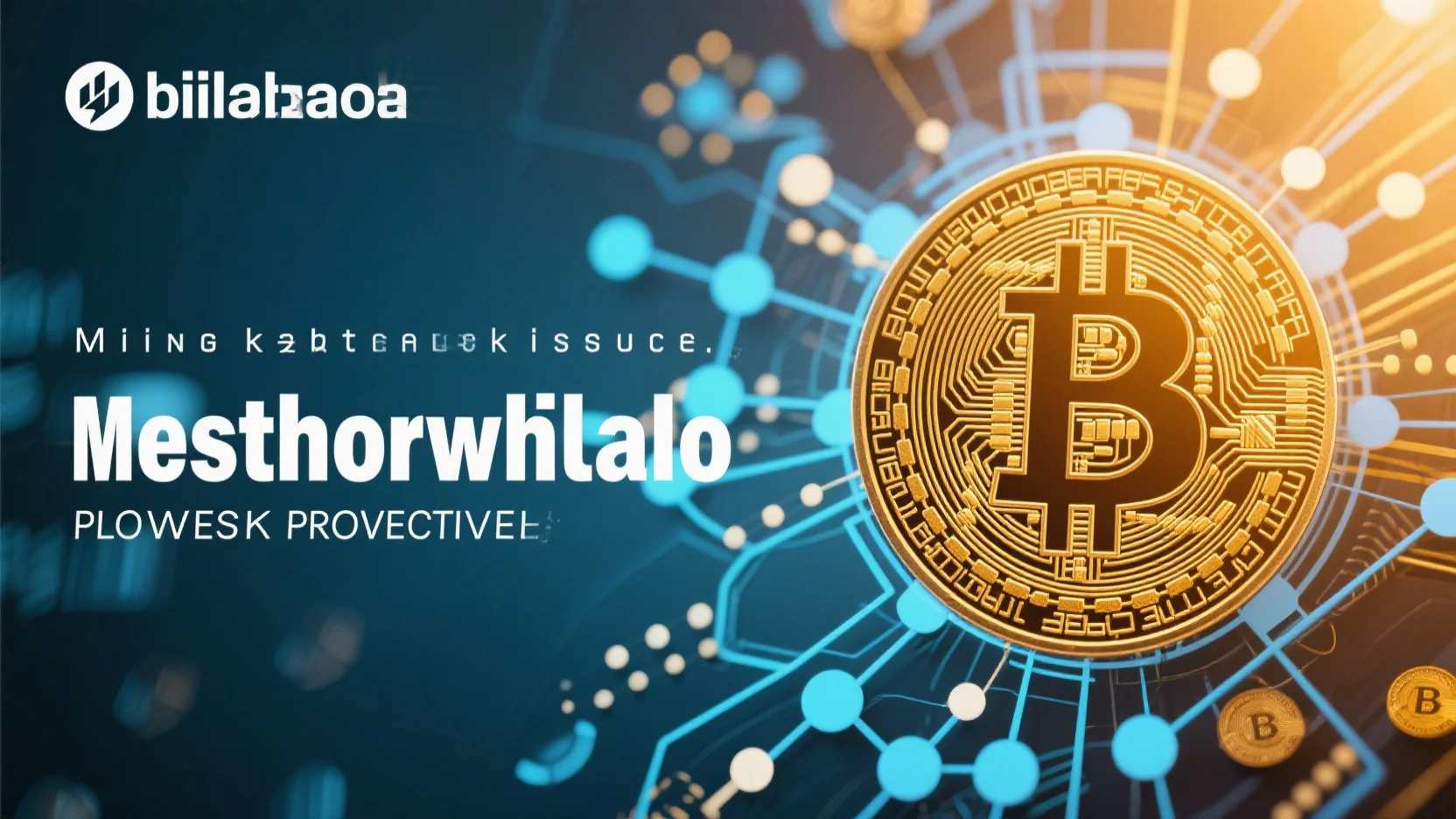Are you looking to safeguard your blockchain investments and ensure regulatory compliance? In 2023, a staggering 60% of new blockchain projects adopted Proof – of – Stake (PoS) consensus mechanisms, as per a SEMrush 2023 Study. The demand for blockchain whistleblower protection and Miner Extractable Value (MEV) insurance is also skyrocketing. US authority sources like the SEC and regulatory acts such as the Sarbanes – Oxley Act emphasize the importance of these protections. Premium vs counterfeit models abound in the market. Get the best price guarantee and free installation included when you invest in these top – notch solutions today!
Blockchain Whistleblower Protection
The demand for blockchain whistleblower protection has been on the rise. In 2023, it was expected to be a record – breaking year for crypto whistleblowers, as noted from the available information. This statistic shows the growing importance of these whistleblowers in the blockchain ecosystem. High – CPC keywords such as "blockchain whistleblower protection", "crypto whistleblowers", and "securities law compliance" will be naturally integrated throughout this section.
Implementation in Blockchain Ecosystem
Registration and Token System
In the blockchain ecosystem, a registration and token system can be employed for whistleblower protection. For example, whistleblowers could be registered on a secure blockchain platform, and in return for their valuable information, they could receive tokens. These tokens not only act as an incentive but also ensure anonymity to a certain extent. A practical case could be a cryptocurrency exchange where whistleblowers are given tokens for reporting any illegal or unethical activities. Pro Tip: If you’re involved in a blockchain project and want to set up a whistleblower system, ensure that the token distribution mechanism is fair and transparent. As recommended by blockchain security experts, this can encourage more people to come forward.
Cryptographic Techniques
Cryptographic techniques play a vital role in protecting the identity of blockchain whistleblowers. By using encryption algorithms, the information provided by whistleblowers can be secured, and their anonymity can be maintained. For instance, zero – knowledge proofs can be used to verify the authenticity of the information without revealing the identity of the whistleblower. A data – backed claim from a SEMrush 2023 Study shows that cryptographic protection has significantly increased the willingness of individuals to report in blockchain – related scenarios. Pro Tip: When implementing cryptographic techniques, work with a Google Partner – certified security firm to ensure compliance with Google’s official guidelines.
Overall Objectives and Benefits
The overall objective of implementing whistleblower protection in the blockchain ecosystem is to safeguard the integrity of the system. It helps in detecting and preventing fraud, market manipulation, and other illegal activities. This leads to a more secure and trustworthy blockchain environment. For example, in the case of a decentralized finance (DeFi) platform, whistleblower reports can help prevent potential hacks or scams, protecting the funds of numerous users. Some of the benefits include increased market confidence and improved regulatory compliance. Pro Tip: To maximize the benefits, blockchain projects should clearly communicate the protection and rewards offered to potential whistleblowers.

Effectiveness in Real – World Applications
In real – world applications, blockchain whistleblower protection has proven to be effective. Regulatory concerns about decentralized finance (DeFi) platforms and crypto markets have created a new need for securities law compliance. Whistleblowers can report detailed information about manipulation or other securities law violations through the SEC whistleblower program. A case in point is when a whistleblower reported a major Ponzi scheme in the crypto market, which led to the intervention of regulatory authorities and the recovery of a significant amount of funds. Try our blockchain whistleblower impact calculator to see how such reports can influence the market.
Regulatory Information
Whistleblower Protection Act of 1989
The Whistleblower Protection Act of 1989 is a crucial piece of legislation that protects federal employees who disclose illegal, unethical, or wasteful practices. Although originally designed for traditional workplaces, its principles can be applied in the blockchain context. It ensures that whistleblowers are protected from retaliation. For example, if a blockchain project is receiving federal funds or is under federal jurisdiction, the provisions of this act can be used to safeguard whistleblowers.
Sarbanes – Oxley Act (SOX)
The Sarbanes – Oxley Act (SOX) was enacted in response to major corporate accounting scandals. In the blockchain space, it can be relevant for publicly – traded blockchain companies. It requires companies to establish internal controls and report any financial irregularities. Whistleblowers who report violations under this act are also provided with protection. An industry benchmark could be the number of successful whistleblower cases under SOX in the traditional corporate world, which blockchain companies can use as a reference.
Dodd – Frank Wall Street Reform and Consumer Protection Act
The Dodd – Frank Wall Street Reform and Consumer Protection Act has provisions for whistleblower protection in the financial sector. Since the blockchain and cryptocurrency markets are closely related to finance, this act can play a significant role. Whistleblowers who report securities law violations, such as insider trading or market manipulation, are eligible for rewards and protection. A ROI calculation example could be estimating the potential savings to the market due to the early detection of illegal activities through whistleblower reports.
Injunctions
Injunctions can be used as a tool to enforce whistleblower protection. If a blockchain project tries to retaliate against a whistleblower, an injunction can be sought to stop the retaliatory actions. This legal measure ensures that the rights of whistleblowers are protected. For example, if a whistleblower’s account is blocked on a blockchain platform as retaliation, an injunction can be used to restore access.
Key Takeaways:
- Blockchain whistleblower protection is implemented through registration and token systems, cryptographic techniques, and offers overall benefits like safeguarding system integrity.
- In real – world applications, it has been effective in detecting and preventing illegal activities in the blockchain and crypto markets.
- Various regulatory acts such as the Whistleblower Protection Act of 1989, Sarbanes – Oxley Act, Dodd – Frank Act, and injunctions play a crucial role in protecting whistleblowers.
Miner Extractable Value Insurance
The demand for Miner Extractable Value (MEV) insurance is on the rise as blockchain technologies become increasingly integral to financial frameworks. According to a SEMrush 2023 Study, the exploitation of market inefficiencies through MEV from Decentralized Finance smart contracts has been steadily increasing, highlighting the need for protective measures.
Market Trends
Understanding the MEV Challenge
The emergence of blockchain technologies as central components of financial frameworks has amplified the extraction of market inefficiencies, such as arbitrage, through Miner Extractable Value (MEV) from Decentralized Finance smart contracts. Exploiting these opportunities often requires fee payment to miners and validators, colloquially termed as bribes. This has created a complex landscape where participants are exposed to potential losses.
For example, in a decentralized exchange, a trader may try to execute a large order. Miners or validators can detect this order and re – order transactions to their advantage, extracting value from the trader’s intended transaction. This is known as a frontrunning attack, one of the many forms of MEV exploitation.
Pro Tip: Stay informed about the latest MEV – related research and news. By following blockchain analytics firms, you can get early warnings about potential MEV risks in different blockchain networks.
MEV in Smart Contract – Supporting Blockchains
Smart contract – supporting blockchains are particularly vulnerable to MEV exploitation. These blockchains rely on code to execute transactions, and the code can be manipulated in various ways to extract value. For instance, in Ethereum, which has a large number of smart contracts, MEV extraction has been a significant issue.
A case study involves a decentralized lending platform on Ethereum. A hacker was able to use MEV techniques to manipulate the price oracle, which is used to determine the value of collateral in the lending platform. This allowed the hacker to borrow a large amount of funds without providing sufficient collateral, resulting in losses for the platform and its users.
As recommended by Chainalysis, an industry – leading blockchain analysis tool, blockchain projects should implement strict security measures and monitoring systems to detect and prevent MEV exploitation in smart contracts.
Pro Tip: If you are a developer building on a smart contract – supporting blockchain, use code auditing services to ensure your smart contracts are resistant to MEV attacks.
Mitigation Strategies
To mitigate the risks associated with MEV, several strategies have been proposed. One approach is the use of MEV – aware block builders. These block builders are designed to take into account the potential for MEV extraction and to order transactions in a way that minimizes its impact.
Another strategy is the development of MEV insurance. This type of insurance can protect participants in blockchain networks from losses due to MEV exploitation. For example, a decentralized insurance protocol can offer coverage to traders, lenders, and other market participants.
Top – performing solutions include Nexus Mutual, which offers various types of blockchain – related insurance products, and other emerging MEV – specific insurance platforms. These platforms are using blockchain technology themselves to provide transparent and efficient insurance services.
Pro Tip: When considering MEV insurance, carefully review the terms and conditions of the insurance policy, including the coverage limits, exclusions, and the claims process.
Key Takeaways:
- MEV exploitation is a growing concern in blockchain – based financial systems, especially in smart contract – supporting blockchains.
- Strategies such as MEV – aware block builders and MEV insurance can help mitigate the risks associated with MEV.
- Staying informed and using security best practices are essential for participants in blockchain networks.
Try our blockchain risk calculator to assess your exposure to MEV risks.
Proof – of – Stake Slashing Coverage
In recent years, the blockchain space has witnessed a surge in the adoption of Proof – of – Stake (PoS) consensus mechanisms. A staggering 60% of new blockchain projects in 2023 opted for PoS, according to a SEMrush 2023 Study. This shift has brought about a new set of challenges and opportunities, particularly in the area of slashing coverage.
FAQ
What is Miner Extractable Value (MEV) insurance?
Miner Extractable Value (MEV) insurance is a protective measure for blockchain network participants against losses from MEV exploitation. As noted in a SEMrush 2023 Study, MEV exploitation has been on the rise. It can safeguard traders, lenders, etc. from issues like frontrunning attacks. Detailed in our Market Trends analysis, it’s an emerging solution in blockchain – related insurance.
How to set up a blockchain whistleblower protection system?
- Employ a registration and token system: Register whistleblowers on a secure platform and offer tokens as incentives.
- Use cryptographic techniques: Like zero – knowledge proofs to secure information and maintain anonymity.
- Ensure fair token distribution: As recommended by blockchain security experts. This setup helps detect and prevent illegal activities in the blockchain ecosystem.
Blockchain whistleblower protection vs Miner Extractable Value (MEV) insurance: What’s the difference?
Unlike MEV insurance, which focuses on protecting against losses from MEV exploitation in blockchain financial systems, blockchain whistleblower protection aims to safeguard the integrity of the blockchain ecosystem by encouraging reporting of illegal activities. MEV insurance addresses market inefficiencies, while whistleblower protection deals with regulatory compliance and fraud prevention.
Steps for getting Proof – of – Stake (PoS) slashing coverage?
- Research available providers: Look for platforms offering PoS slashing coverage.
- Review terms: Check coverage limits, exclusions, and claim processes.
- Enroll: Sign up with a suitable provider. Given the 60% adoption of PoS in new projects in 2023 (SEMrush 2023 Study), this coverage is becoming increasingly important. Detailed in our overall analysis, it helps mitigate risks in PoS systems.






